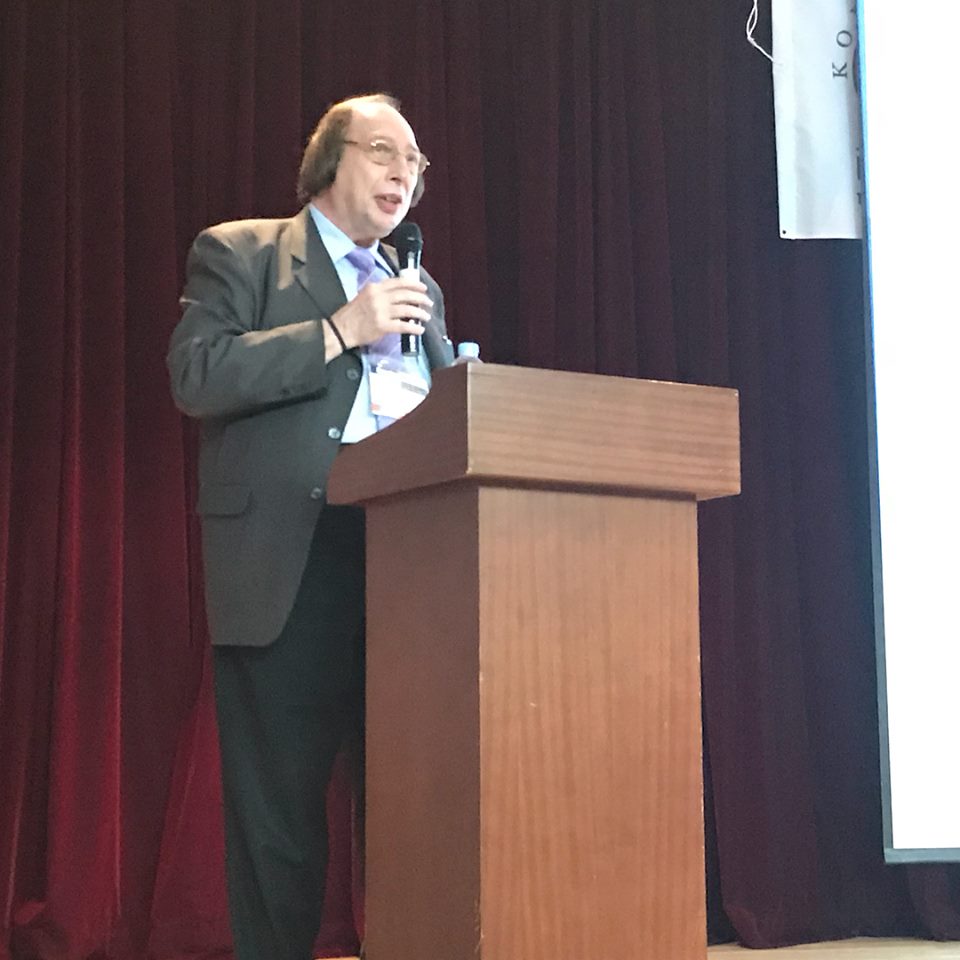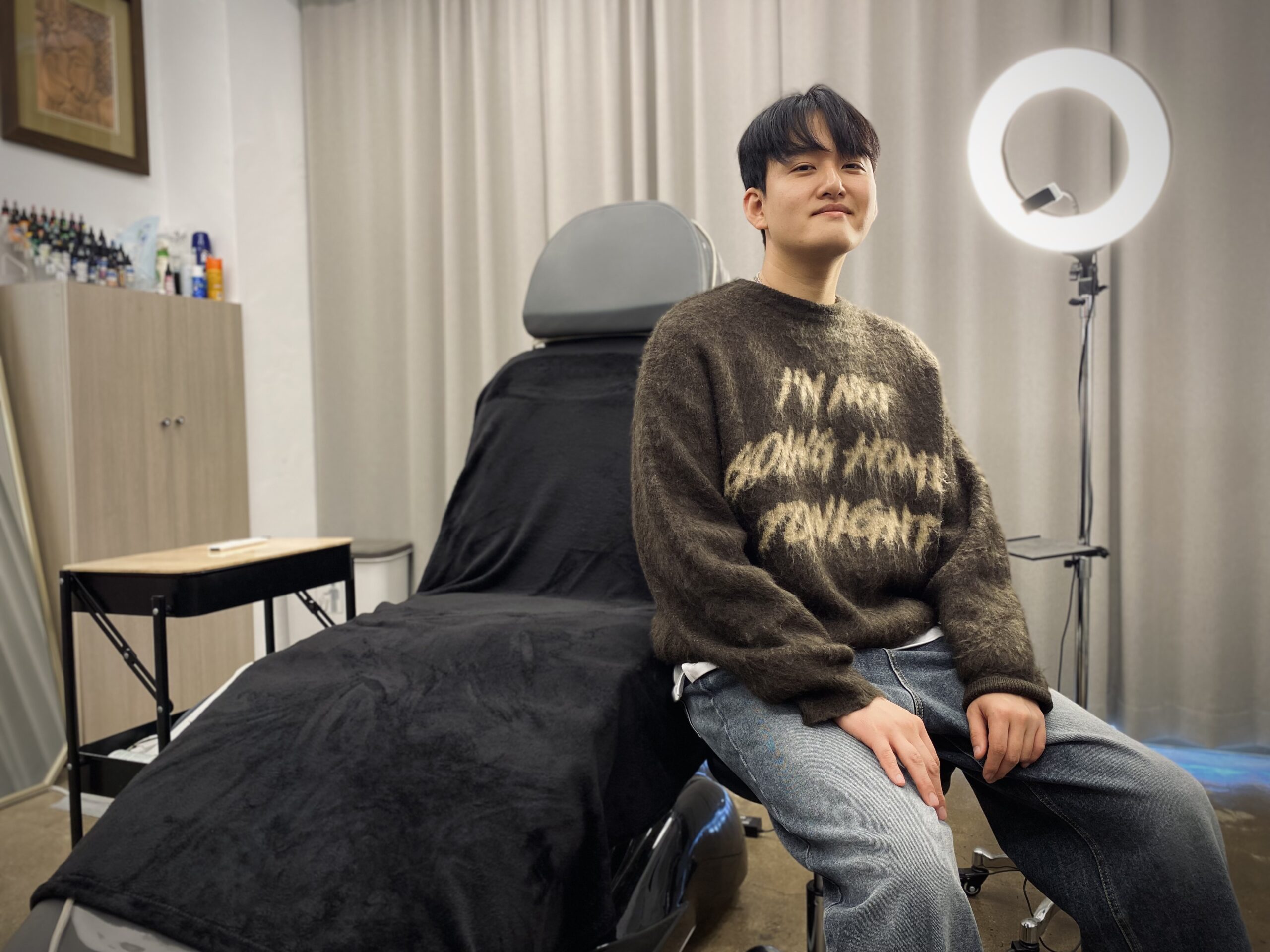Interview with Korea TESOL
Interview by Dr. David E. Shaffer.
For this article in the Korea TESOL column, the editor-in-chief of the Gwangju News thought that it would be an interesting idea to interview himself as the president of Korea TESOL. Herein are the results of that undertaking. — Ed.
Gwangju News (GN): Good day, Dr. Shaffer – “Dave,” if I may. I have so many things I want to ask you about KOTESOL and about Korea, but before that, I would like for you to tell our readership a little about yourself.
Korea TESOL President (KOTESOL): Well, I am originally from western Pennsylvania in the U.S. After studying education at the Pennsylvania State University, I volunteered for the U.S. Peace Corps and ended up here in Korea in 1971. I taught vocational education at the government-run vocational training center in Gwangju. After leaving the Peace Corps four years later, I moved across town to Chosun University (a mere walk back then). I spent the remainder of my teaching career at Chosun, getting advanced degrees in linguistics and getting married and raising a family along the way.
GN: 1971?! That was almost a half century ago! You must have seen quite a few changes in Gwangju and Korea since then.
KOTESOL: Oh, yes, changes for sure. Gwangju was much smaller in area, and the population was only one-third of what it is today. Transportation was much slower and much less comfortable. The main road from Jeonju to Gwangju, for example, had no tunnels and was only a lane and a half wide – all unpaved, all bumpy. Gwangju had no apartment buildings when I came. I stayed in a hasuk-jip (하숙집; one room in a single-story home with board). Houses had no indoor plumbing, just a single spigot or hand-pump in the communal wash area. Electricity was iffy; it could go off anytime for any length of time. It was used mainly for lights; the average household had no refrigerator, no telephone, no television. What did people do for entertainment? There were three options: go to a tearoom, go to a movie, or go drinking.
GN: Life in the home and in the community certainly has changed. What about in the classroom – what changes have you seen in English education in your time here?
KOTESOL: We must remember that back then, Korea was still in recovery mode from the devastating Korean War, so resources were scarce. A typical classroom at my university had rough wooden desks and chairs, a blackboard, chalk, and an eraser. No heating, no cooling – that is why Korea has long winter and summer vacations. Public school classrooms, however, did have a coal-briquette space heater in their center. If your seat was near, you could feel the heat.
Educational materials were extremely limited, often consisting of a single textbook for a single course. There were no English lessons on radio or TV, and Internet had not even entered the English lexicon. When audio cassette tapes did become available, the sets of tapes were so exorbitantly priced that many families could not afford them. English study then began in middle school, and middle school teachers made their own visual aids. Public school teachers had very little training available to them other than the undergraduate schooling that they received, and very little of that was related to improving their language skills. The grammar–translation method was still in its heyday. In-service training was not yet a realized concept, though over the years, it has come to contribute considerably to English teachers’ professional development.

GN: What about KOTESOL – what was it like in the early days?
KOTESOL: There was no teachers’ organization for the average English teacher early on. When I began my master’s studies, I joined the two organizations that our English faculty belonged to: LSK (Linguistic Society of Korea) and ELLAK (English Language and Literature Association of Korea). There was a third, less known organization of college English professors, now known as KATE. KOTESOL per se did not come into existence until 1992–93, but its predecessor AETK (Association of English Teachers in Korea) had been operating mainly in the Seoul area since the early 1980s.
Information on an English teachers’ association that included expats did not filter down to the Gwangju area until Park Joo-Kyung (now a professor at Honam University) returned from a 1992 Jeonju conference with news that KOTESOL was forming. In order to establish a KOTESOL community in our area, she asked me to join. The result was that the “Cholla Chapter” became KOTESOL’s first. Regional chapters quickly formed from the north to the south of the nation. KOTESOL held its first national conference within its first year after birth. Its first publication, a journal-cum-newsletter, came even faster, followed by full-fledged journals, conference proceedings, and newsmagazines. Likewise, membership grew quickly, partially due to the dearth of information available on teaching materials and teaching techniques.
GN: And KOTESOL today, how does it differ from the other English language teachers’ associations across the nation?
KOTESOL: There are now over a dozen English teachers’ associations that are national in scope, and they are nearly all identical in that they consist of an executive board, organize an annual conference (or two), and publish an academic journal. KOTESOL has all these, but operates in English and is a more expat-friendly organization. What distinctly sets KOTESOL apart from the other ELT associations is our network of regional chapters. The chapters have monthly meetings and annual conferences with presentations on all things ELT (English language teaching), led by KOTESOL members or others in the ELT community. Chapter events create opportunities for members to get involved in leadership roles. In addition, KOTESOL has a number of special interest groups (SIGs) focusing on topics from classroom management to reflective practice to women and gender equality.
GN: I hear that you have a conference coming up soon.
KOTESOL: That is correct! In addition to our spring national conference, we have an international conference each October. I have been quoted elsewhere as saying that “it’s the best darn ELT conference in Korea.” It is by far the largest, and very classroom-oriented. We have a team of over 50 members making preparations for the October 12–13 event at Sookmyung Women’s University in Seoul (https://koreatesol.org/IC2019).
GN: What would you consider to be KOTESOL’s major accomplishments during you tenure as president?
KOTESOL: Well, I can say that KOTESOL is as vibrant as ever – at both the national and chapter level. Our recognition is expanding: We have developed additional partnerships with both domestic and international ELT associations. Our areas of concern are widening to include not only ELT techniques but additional concerns that affect the learning environment, such as inclusivity and privacy issues.
GN: Awesome. I wish we had more time to discuss more.
KOTESOL: It has been my pleasure. Thank you for this unique opportunity!
The Author
David Shaffer, as president of KOTESOL and a member of the KOTESOL conference committee, invites you to attend the 2019 KOTESOL International Conference and consider joining KOTESOL. As vice-president of the Gwangju-Jeonnam Chapter of KOTESOL, he invites you to participate in the teacher development workshops at their monthly meetings. Dr. Shaffer is presently the board chair at the Gwangju International Center and also editor-in-chief of the Gwangju News.



